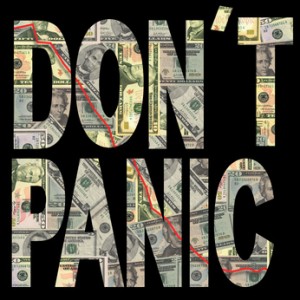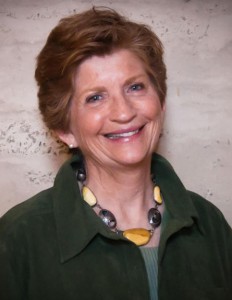 It’s Sunday, around 10 p.m. Cynthia’s house is sort of quiet. Her son stopped over with his wife this afternoon, more to say “hi” to her than anything else.
It’s Sunday, around 10 p.m. Cynthia’s house is sort of quiet. Her son stopped over with his wife this afternoon, more to say “hi” to her than anything else.
That’s what’s left of the tradition of sharing Sunday dinner together: 15 minutes to see how Mom’s doing, maybe to borrow something …
One more week is crossed off the calendar, another about to start. And in between hangs a quiet reflection, maybe a little assessment. Where do the work weeks all go? Always new challenges, things on the “to do” list that bring more frustration than joy. The business is moving, but not exactly thriving …
Walking aimlessly throughout the house, Cynthia feels the cool floor underfoot and stops in one room after another. A few phrases ricochet around her head with more and more frequency these days: “What about me? Is this all there is?”
In my research and conversations with women about money, this questioning came up again and again, like a 50-year-old woman’s mantra. And it wasn’t until I sat next to a nice man on a flight to Chicago last fall that I discovered that my anecdotal findings had scientific basis.
He was reading “The Female Brain” by Dr. Louann Brizendine. My first question to him was “Does she talk about menopause?” Boy, does she! I had ordered the book from Amazon before I even got to my hotel.
Dr. Brizendine is a neuropsychologist, Harvard-educated, and affiliated with the Department of Psychiatry at the University of California, San Francisco. Her eye-opening research has been made possible in the last decades by the new noninvasive brain-imaging technologies. They allow evaluation of the brain without having to dissect it. That is, she has live subjects and can measure the role and impact of different hormones on the female brain throughout the life cycle, from pre-birth to death.
Grossly oversimplified, the female fetus starts life in the womb having been defined by hormones. Then, from birth to age two, massive levels of estrogen lock in the female brain circuitry, reinforcing what makes little girls different from little boys. By age two, the flow subsides until puberty, when a renewed wash triggers an interest in sexual attractiveness. The body is ready to reproduce.
The same hormones encourage mating behaviors that ensure continuity of the human race. Others, including oxytocin, kick in at childbirth to create a Super-mom: the woman who hears her child whimper 100 feet away, who could lift a car if her child was in danger, and who turns her children into Priority One, including above her husband. Protective Mom stuff.
Oxytocin is a powerful bonding agent between mother and child, and is released during breastfeeding, by the smell of her baby, and the hugs from her children as they grow up. In fact, its hold is so strong, it’s said to create “mommy brain.”
Years pass. Next comes perimenopause, when certain brain circuits decrease in sensitivity to estrogen. At menopause itself, the circuits fueled by estrogen, oxytocin, testosterone, and progesterone go into gradual decline. While “love for the child” does not disappear, much of the power of oxytocin does. The haze of mommy brain lifts.
As menopause transitions a woman out of her reproductive phase, her children mature and are also moving on into lives of their own. This coincides with the questions: “What about me? Is this all there is?”
Relationships undergo reassessment as husbands see a side of their wives never experienced before. Some marriages adapt; some fail.
But with this questioning comes a woman’s “Moment of Awakening,” when she suddenly recognizes her own mortality for the first time. It’s as if the nonreproductive phase signals a new act in the play called Life.
Yet that mortality is still a long way off. For example, for women who turned 65 in 2010, life expectancy is 85. So for those in their 50s today, it’s at least that long.
The next question is, “How in the hell am I [or we] going to pay for the next 30-35 years of my life?”
Financial reality has raised its ugly head. Lack of mastery becomes palpable and nighttime financial panic attacks become the norm. “What do I do? What have I done with all the money I’ve earned? How much do I need in order to maintain this lifestyle for the duration? What do I want to do with the rest of my life?”
If any of these questions sound familiar, be sure you’re signed up to this weekly post by putting your name and email address in the box in the upper right.
I have a book on the way that will give you all the answers …
xxxxxxx
 Sharon O’Day lost everything at age 53: her home, her business, everything. But how could that be? She’s an expert in global finance and marketing with an MBA from the Wharton School. She has worked with governments, corporations, and individuals … yes, she was the secret ‘weapon,’ if you will, behind many individuals in high places. But still, she did! Since then, Sharon has interviewed countless women and done extensive research to understand how that could have happened, especially with her strong knowledge of numbers and finance.
Sharon O’Day lost everything at age 53: her home, her business, everything. But how could that be? She’s an expert in global finance and marketing with an MBA from the Wharton School. She has worked with governments, corporations, and individuals … yes, she was the secret ‘weapon,’ if you will, behind many individuals in high places. But still, she did! Since then, Sharon has interviewed countless women and done extensive research to understand how that could have happened, especially with her strong knowledge of numbers and finance.
The surprising answers will be shared in her upcoming book “Money After Menopause.” Today her mission is to show as many women as possible how to reach financial security for the long term. She has developed a step-by-step plan to get past all the obstacles that keep women broke and scared … and from reaching the financial peace of mind they so deserve.






